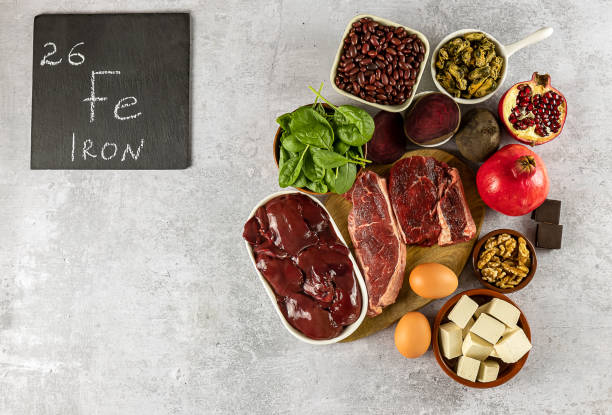Do you ever wonder how elite athletes generate that burst of power and lightning-fast speed on the field or in the gym? If you’re striving to enhance your performance and build explosive power, learning how to train for explosiveness and speed like an athlete is essential. This guide breaks down the key components of athletic training, from plyometrics and strength work to proper recovery strategies, so you can maximize your power output and agility.
Understanding Explosiveness and Speed
Explosiveness refers to the ability to generate maximum force in a short period, while speed is about how quickly you can execute that force in movement. Both qualities are essential for sports performance and functional fitness. When training to improve these attributes, the focus should be on developing power, reaction time, and muscle coordination. With a combination of targeted exercises and proper technique, you can enhance your ability to accelerate, jump higher, and move more efficiently.
Key Components:
- Power Training: Involves high-intensity exercises that require rapid muscle contractions.
- Strength Development: Builds the foundation for explosive movements.
- Agility Drills: Improve your coordination and reaction speed.
- Flexibility and Recovery: Ensure your muscles are ready to perform and recover effectively.
Essential Training Techniques
Improving explosiveness and speed like an athlete involves a variety of training methods. Here are some tried-and-true techniques:
1. Plyometric Exercises
Plyometrics are explosive movements that train your muscles to exert maximum force in a short time.

- Examples:
- Jump Squats: Start in a squat position, explode upward, and land softly back into the squat.
- Box Jumps: Jump onto a sturdy box or platform, focusing on a soft, controlled landing.
- Burpees: Combine a squat, jump, and push-up for a full-body explosive move.
- Jump Squats: Start in a squat position, explode upward, and land softly back into the squat.
Benefits: Plyometrics enhance muscle power, improve neuromuscular coordination, and help train your body to react quickly during high-intensity movements.
2. Strength Training
Building strength is a critical foundation for explosive performance. Focus on compound movements that engage multiple muscle groups simultaneously.

- Key Exercises:
- Squats and Deadlifts: Build lower-body strength and core stability.
- Lunges: Improve unilateral strength and balance.
- Power Cleans: Develop explosive strength and coordination.
- Squats and Deadlifts: Build lower-body strength and core stability.
Benefits: Increasing overall strength enables you to generate more power during explosive movements and helps prevent injuries by reinforcing your musculoskeletal system.
3. Sprint Training
Short bursts of high-intensity sprinting can drastically improve your speed and acceleration. Incorporate sprint intervals into your training routine for maximum effect.

- How to Do It:
- Warm-Up Thoroughly: Ensure your muscles are ready for explosive movements with dynamic stretches.
- Short Sprints: Run at near-maximal effort for 20-30 seconds, then recover for an equal or slightly longer period.
- Repeat: Perform 6-10 intervals, focusing on maintaining form and speed.
- Warm-Up Thoroughly: Ensure your muscles are ready for explosive movements with dynamic stretches.
Benefits: Sprint training boosts cardiovascular fitness and builds fast-twitch muscle fibers, which are crucial for speed and explosiveness.
4. Agility Drills
Agility drills help refine your coordination and improve your ability to change direction quickly, which is critical for sports and overall athletic performance.

- Popular Drills:
- Cone Drills: Set up cones in a zigzag or T-pattern and work on quick directional changes.
- Ladder Drills: Use an agility ladder to perform various footwork exercises that enhance coordination and speed.
- Shuttle Runs: Sprint back and forth between two points to simulate rapid changes in direction.
- Cone Drills: Set up cones in a zigzag or T-pattern and work on quick directional changes.
Benefits: These drills enhance your body’s ability to move quickly and efficiently, which is key for any sport or fitness activity.
Structuring Your Training Routine
To truly see improvements in explosiveness and speed, it’s important to structure your workouts properly. Here are some guidelines to help you get started:
Warm-Up and Dynamic Stretching
Before diving into high-intensity exercises, a proper warm-up is essential. A dynamic warm-up increases blood flow, raises your body temperature, and prepares your muscles for explosive movements.
- Dynamic Warm-Up Examples:
- Leg swings
- High knees
- Arm circles
- Lunges with a twist
- Leg swings
Benefits: A thorough warm-up reduces the risk of injury and primes your body for peak performance.
Incorporate Variety and Periodization
Your training program should evolve over time. Periodization, or varying the intensity and type of training, can help prevent plateaus and ensure continuous improvement.
- Weekly Structure:
- Day 1: Strength training (e.g., squats, deadlifts, lunges)
- Day 2: Plyometric and agility drills
- Day 3: Sprint intervals and recovery
- Day 4: Active recovery (light stretching or yoga)
- Day 5: Combination workout focusing on explosive movements
- Day 6: Flexibility training and mobility work
- Day 7: Rest and recovery
- Day 1: Strength training (e.g., squats, deadlifts, lunges)
Benefits: Mixing different types of workouts prevents overuse injuries and keeps your training interesting and effective.
Recovery and Flexibility
Training for explosiveness and speed can be demanding, so adequate recovery is essential. Incorporate stretching, foam rolling, and perhaps even massage therapy into your routine.
- Recovery Tips:
- Stretch for 10-15 minutes post-workout.
- Use a foam roller to release muscle tension.
- Ensure you’re getting enough sleep to facilitate muscle repair.
- Stretch for 10-15 minutes post-workout.
Benefits: Proper recovery not only helps prevent injuries but also ensures you’re ready for your next high-intensity session.
Nutrition for Explosiveness and Speed
Fueling your body correctly is as important as the workouts themselves. A balanced diet supports muscle growth, energy levels, and overall performance.
Key Nutritional Components
- Protein: Essential for muscle repair and growth. Aim for lean sources like chicken, fish, beans, and tofu.
- Carbohydrates: Provide the energy needed for high-intensity workouts. Focus on whole grains, fruits, and vegetables.
- Healthy Fats: Crucial for hormone production and overall health. Include sources like avocados, nuts, and olive oil.
- Hydration: Maintaining optimal hydration is vital for performance and recovery.
Actionable Tip: Consider consulting with a nutritionist to tailor a diet plan that meets your training needs and supports your goals of building explosiveness and speed like an athlete.
Real-World Applications and Success Stories
Many athletes and fitness enthusiasts have transformed their performance by integrating these training techniques into their routines. For instance, a sprinter who regularly incorporates plyometric exercises and sprint intervals has noted significant improvements in acceleration and overall speed. Similarly, a weightlifter enhanced his performance by focusing on explosive movements and structured recovery, leading to increased power output in his lifts.
These real-world applications highlight that with dedication, structured training, and proper nutrition, you can achieve the level of explosiveness and speed that elite athletes display.
Overcoming Common Challenges
While the journey to improved explosiveness and speed is rewarding, it’s not without challenges. Here are some common obstacles and strategies to overcome them:
- Injury Risk: High-intensity exercises can lead to injuries if not performed correctly. Prioritize proper form, warm-ups, and recovery to minimize risk.
- Plateaus: When progress stalls, consider varying your workout routine or increasing the intensity of your exercises. Periodization can help keep your muscles challenged.
- Motivation: Staying motivated during intense training can be difficult. Set clear, achievable goals and track your progress to stay inspired.
Integrating Training with Overall Self-Care
Your training isn’t just about physical workouts—it’s part of a broader self-care strategy. Mental focus, stress management, and recovery all play critical roles in enhancing athletic performance.
For more insights on maximizing recovery and injury prevention, you might find How to Activate Your Glutes Properly for Maximum Growth helpful. This guide offers practical tips to support muscle engagement and overall performance.
Additionally, for a comprehensive approach to self-care, mindfulness, and personal growth, visit venzec.icu. There, you’ll find in-depth resources to help you build a balanced lifestyle that supports both your physical and mental well-being.
Final Thoughts
Training for explosiveness and speed like an athlete isn’t solely reserved for professional sportspeople—it’s a goal that anyone can pursue with the right approach. By incorporating plyometrics, strength training, sprint intervals, and agility drills into your routine, you can build the power and speed needed to elevate your performance in any athletic endeavor.
Remember, consistency, proper technique, and adequate recovery are the cornerstones of success. Embrace the journey, make gradual improvements, and let your training evolve over time. With dedication and smart programming, you’ll soon notice significant gains in your explosiveness and speed, helping you perform at your best whether on the field, in the gym, or in everyday life.
Stay committed to your goals and enjoy the process of transforming your body and unlocking your full athletic potential.









